

|
| ÖSTERREICH | AUSTRIA |
| Bundesland: Niederösterreich | Lower Austria |
| Bezirk: Sankt Pölten |
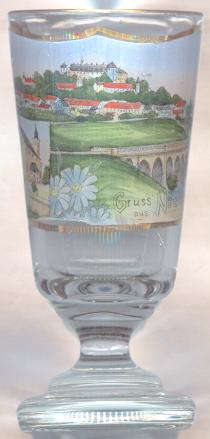 Neulengbach is situated at an elevation of 251 m at the mouth of the stream Anzbach into the river Große Tulln.
The name originated when the Barons of Lengenbach (Altlengbach) transferred their residence to this place around 1190/92. The village that had existed at this place before that, became known as Altenmarkt (Old Market).
At that time the Lengenbach family was among the most powerful in Austria and possessed 20 castles. Their colours were blue and yellow, today the colours of Lower Austria. The rights as a market town were granted in 1535. Today, Neulengbach is the economic and cultural
centre of the Wienerwald (Vienna Woods) region. On the 15th of October, 2000, Neulengbach received the status of a city.
Neulengbach is situated at an elevation of 251 m at the mouth of the stream Anzbach into the river Große Tulln.
The name originated when the Barons of Lengenbach (Altlengbach) transferred their residence to this place around 1190/92. The village that had existed at this place before that, became known as Altenmarkt (Old Market).
At that time the Lengenbach family was among the most powerful in Austria and possessed 20 castles. Their colours were blue and yellow, today the colours of Lower Austria. The rights as a market town were granted in 1535. Today, Neulengbach is the economic and cultural
centre of the Wienerwald (Vienna Woods) region. On the 15th of October, 2000, Neulengbach received the status of a city.
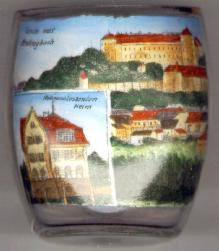
The  castle of Neulengbach [top], built by the Barons of Lengenbach in the late 12th century. After the Lengenbach family
became extinct in the 13th century, the castle belonged to various families. It was enlarged to a mighty castle in the 17th century. Between 1920 and 1952 it was owned by the
municipality of Vienna. The German Wehrmacht used the castle between 1938 and 1945. Since 1960 is is a private property.
castle of Neulengbach [top], built by the Barons of Lengenbach in the late 12th century. After the Lengenbach family
became extinct in the 13th century, the castle belonged to various families. It was enlarged to a mighty castle in the 17th century. Between 1920 and 1952 it was owned by the
municipality of Vienna. The German Wehrmacht used the castle between 1938 and 1945. Since 1960 is is a private property.
The building shown in the inset of glass no. 427, left, is labelled as
 'Rekonvaleszentenheim'
'Rekonvaleszentenheim'
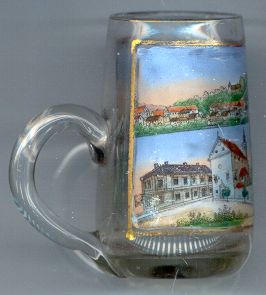
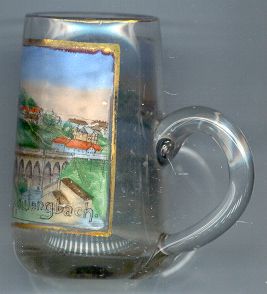
The  parish church Zur Heiligen Dreifaltigkeit (Holy Trinity) [below, no. 1827: insert on bottom left]
was built in 1623–1627 as the church of the order of the Franciscans.
The church houses there altar in Rococo style with altar pieces by Martin Johann Schmidt (Kremser Schmidt) from 1779.
parish church Zur Heiligen Dreifaltigkeit (Holy Trinity) [below, no. 1827: insert on bottom left]
was built in 1623–1627 as the church of the order of the Franciscans.
The church houses there altar in Rococo style with altar pieces by Martin Johann Schmidt (Kremser Schmidt) from 1779.
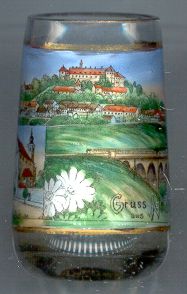
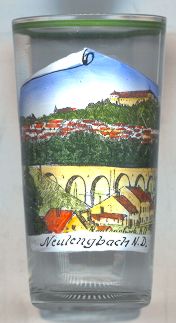
The famous Austrian painter Egon SCHIELE (1890–1918) was held on remand in the prison of the district court at Neulengbach from 13th until 30th April, 1912.
In the subsequent trial he was found not guilty of the original charges (pornography and adultery), but was sentenced to 3 days in prison for threatening public safety. The cell where he was imprisoned
today houses a small Schiele museum.
![[scale]](lineal.jpg)